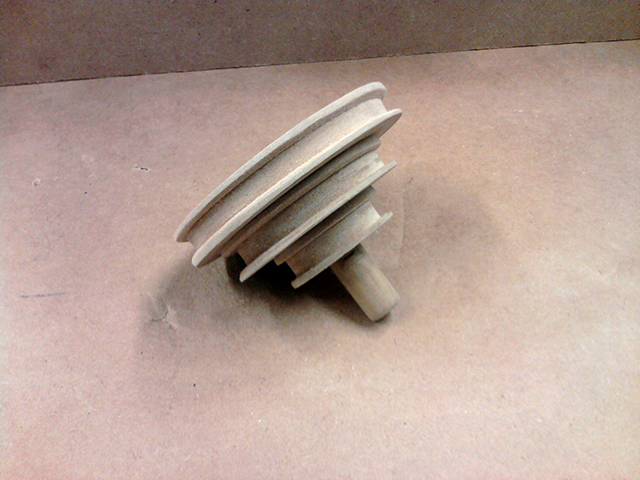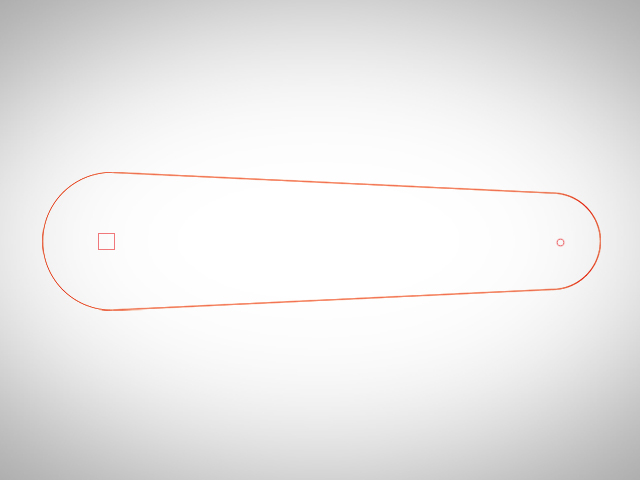Spinner
Mukul Bhatt
Zari Salimnejad
Won Shim
|
Carnegie Mellon Univeristy
Download Activity Sheet (.pdf, .9mb)



About
WHAT The immediate goal of Spinner is to have a child spin a crank fast enough to raise the level of water inside of a jug above a certain point. This is made possible with an included pulley system. This system contains two pulleys: one is spun by a crank, and the other spins an attached jug which contains water (colored so the child can see).
HOW The two pulleys are connected by a rubber band. The child is able to alter the position of the rubber band, giving him or her control over the ratio of the system. This toy is configured in such a way that it is very possible to raise the water level well over a seemingly challenging level with minimal effort. After spending some time with the toy, the child will understand that one ratio works better than another.
In order to make the level of water rise, the child makes the jug spin in order to make the contained water spin as well. The centripetal force created pushes the water to the outer boundaries of its container. As a result, the water has nowhere else to go but up, which is what the child will effectively see. The child may explain it in a different way, noting that the water from the middle has gone somewhere else (i.e. the water has moved out from the center and to the wall).
WHY The ultimate objective of Spinner is to introduce the child to a few fundamental concepts important in the field of physics, including centripetal force, pulleys, and rotational motion. Getting exposed to these ideas will give him or her an early start in understanding how many everyday things work (e.g. bicycles).
MISC Spinner generates no waste after each use. Every component of the toy is rigidly attached, and the containing water is sealed. Spinner also uses no sharp pieces, small pieces that may be classified as choking hazards, or dangerous chemicals. In addition, any child with basic motor skills (ages 3 and up) should be able to play with this toy.




Design Process
Our original concept for the toy originally consisted of using gears instead of pulleys. The aim was to give children the ability to switch gears and place them where they wanted to meet the same goal as we have now. After much consideration, we came to the conclusion that creating gears of our own was out of our skillset; dimensions would need to be precise beyond our level of abilities. Furthermore, giving children too much choice without guide would only confuse them. Limiting their possibilities provides them with simple and clear instructions on what they are expected to do.
Our current design is primarily made of MDF. MDF turned out to be a reliable material; it was both durable and easy to work with. Both the base and the pulleys were created using MDF. The base has two holes to house the pulleys, drilled out with a press.
The pulleys were created using a lathe. Notches were created in each ring to allow the rubber band to stay on. They rotate about a dowel rod cut to dimensions, and they spin freely with the aid of bearings. The parts were assembled together with glue; the aseembly has proven to be sturdy.
The crank is made from laser cut acrylic. Using the laser cutter allowed for a higher degree of control over the part's aesthetics and dimensions. The result came out as we expected.


